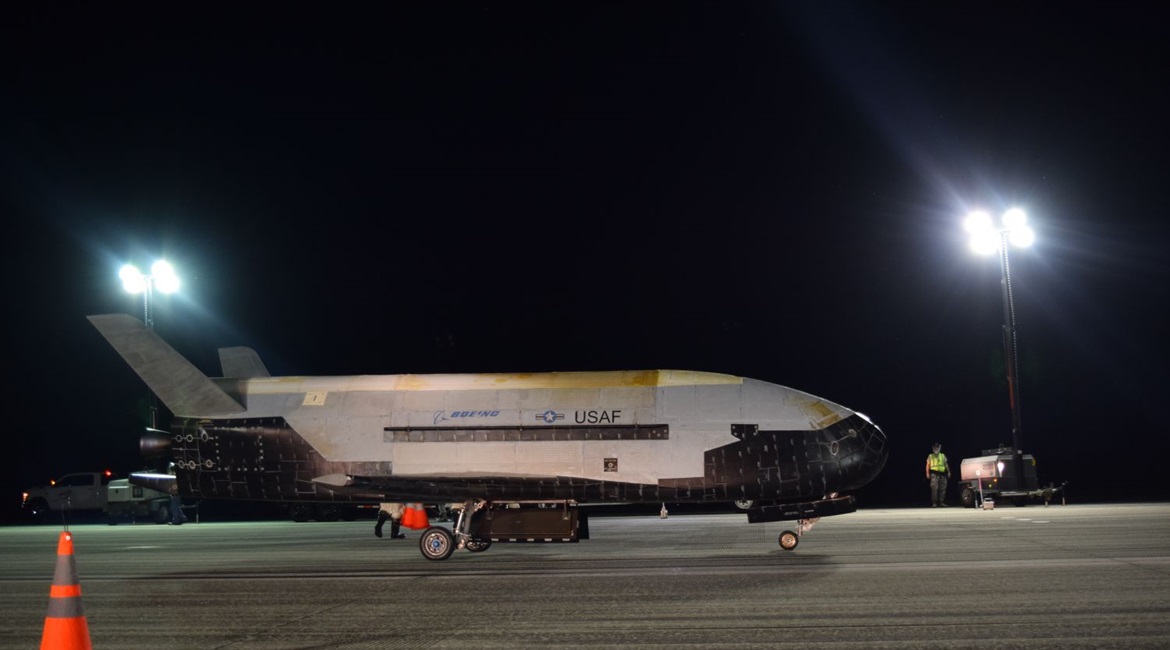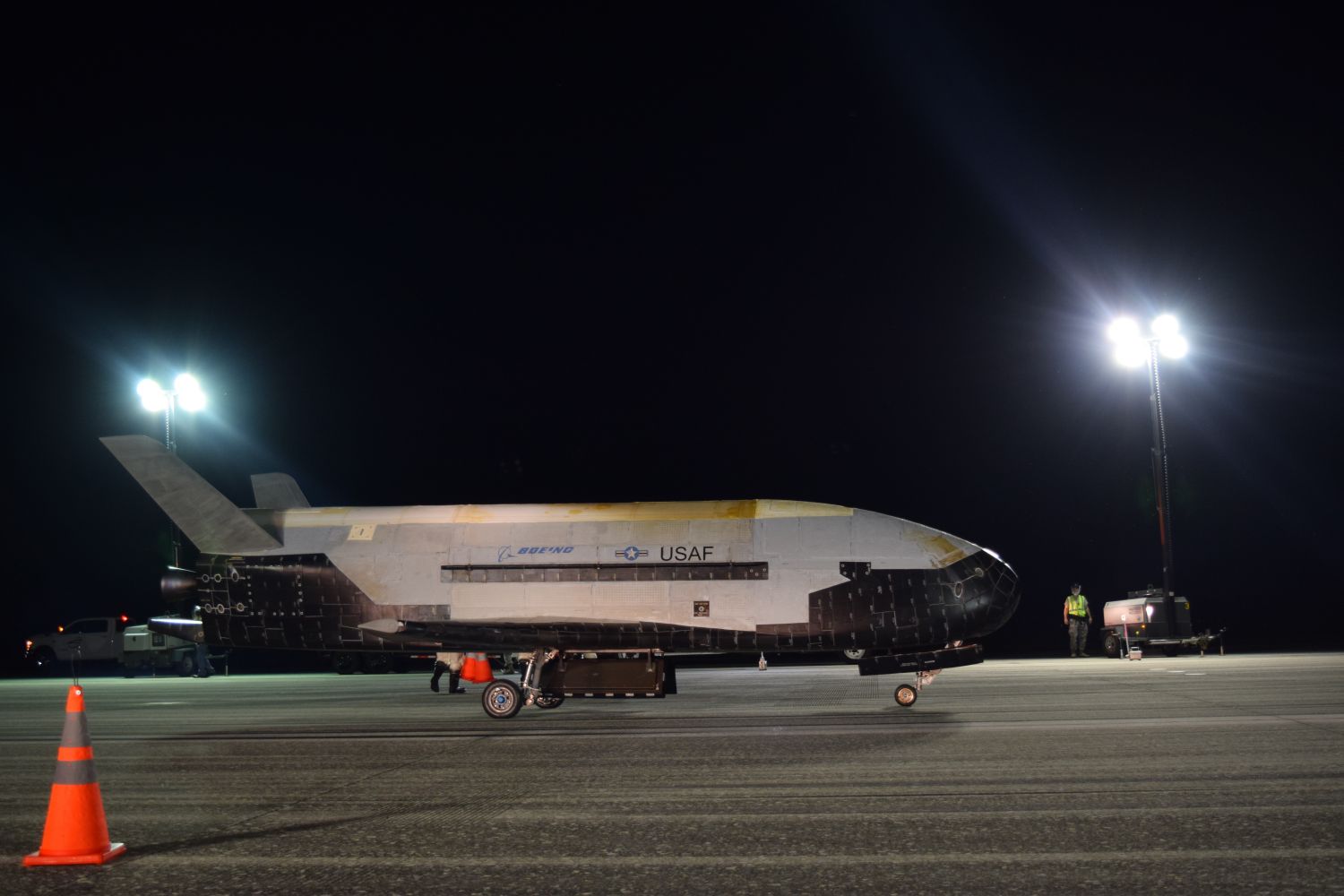
The US Air Force’s (USAF’s) Boeing X-37B Orbital Test Vehicle (OTV) spaceplane returned to the earth’s surface on 27 October after spending 780 days in space on its latest mission.
The X-37B is a reusable and unmanned spacecraft, providing the performance and flexibility to improve technologies in a way that enables scientists and engineers to recover experiments tested in a long-duration space environment, the USAF said in a 27 October statement.

The US Air Force's X-37B, pictured after landing on 27 October 2019, spent 780 days in space on its latest mission. (US Air Force)
Managed by the USAF’s Rapid Capabilities Office (RCO), the X-37B programme performs risk reduction, experimentation, and concept of operations development for reusable space vehicle technologies. The spacecraft hosted Air Force Research Laboratory (AFRL) experiments, among others.
The most recent 780-day mission is the longest time the X-37B has been deployed; its fourth mission, OTV-4, landed on 7 May 2017 after 718 days in orbit. The spacecraft was designed for an on-orbit duration of 270 days. The entire test vehicle programme has now spent 2,865 days on orbit.
The USAF is preparing to launch the sixth X-37B mission in 2020. The service did not return a request for comment prior to publication.
A space expert believes the USAF has been using the X-37B to flight test new satellite technologies and sensors for missions such as intelligence, surveillance, and reconnaissance (ISR). Brian Weeden, director of programme planning at the Secure World Foundation (SWF), told Jane’s on 28 October that, traditionally, the service needed to perform a lot of testing, modelling, simulation, and other costly risk-reduction techniques to try to predict how a satellite with new technologies or sensors would behave in space.
Looking to read the full article?
Gain unlimited access to Janes news and more...






